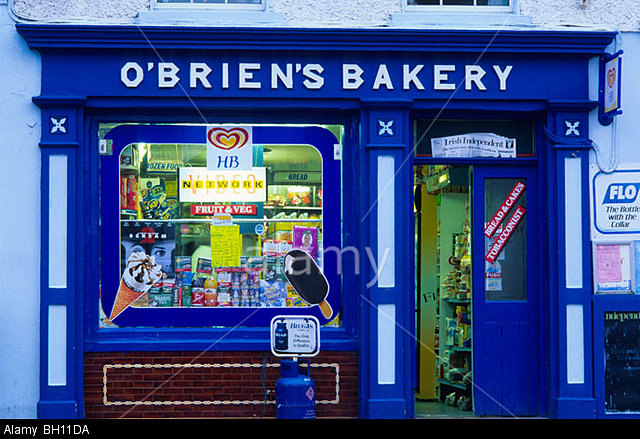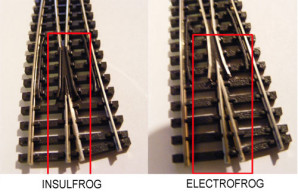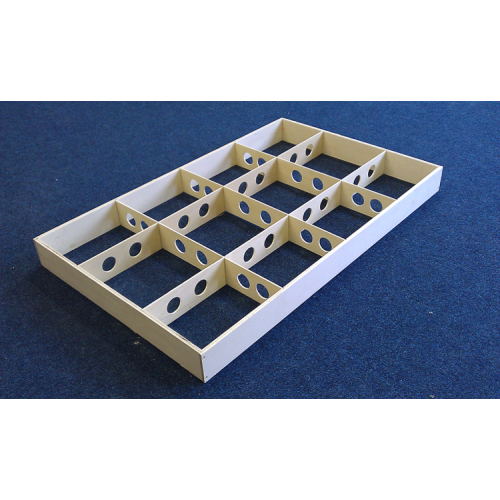-
Posts
7,561 -
Joined
-
Last visited
-
Days Won
47
Content Type
Profiles
Forums
Events
Gallery
Everything posted by Broithe
-
No, hardly at all over six years, and it was under a polycarbonate car-port roof in strong sunlight - some of the cardboard buildings faded and a lot of the "grass" did, too. Modern plastics are much more resistant to UV degradation. Yes, there was a crossing there, so the outside track was a figure-of-eight with the other loop inside the garage.
-
Yeah, you can do what you like at the back. It's the front that needs some thought.
-
We had a hardboard fence along the back, as you can also see, but the Perspex looks a lot better (in the sense that you can hardly see it!) and gives you good vision for re-railing, track cleaning, etc. It will follow round a fairly tight bend, too, as you can see. That section is seen in the early stages and got a bit more stuff as time went on.
-
I had one that had a three-foot drop onto concrete, and we had a live steamer on it, so we put a two-inch high Perspex "fence" - it cost a few bob, but just one catastrophe would have cost more...
-
It's long drop from that causeway.......
-
Hence £14.99 looks a pound less than £15.....
-
Actually, the fare was IR£2 - and he would take UK£2 - it then changed to €2.50, and he would still take UK£2. Everybody got a ticket, so I presume that it was all sorted out afterwards and DB got the due fares. I haven't used it for a few years, I drive now, and he has retired, so I don't know the current situation. He was a good chap with an interest in merchant shipping and we often had a chat at Heuston, as that was the last stop and there was frequently only me left on by then.
-
The 'hobby' aspect doesn't really matter, above a certain turnover threshold* any business must be VAT registered, below that level they just pay the VAT on their supplies and can't claim it back. * currently £82,000 in UK and €75,000 in Ireland - so, around €1,500 a week turnover. At the risk of being 'political', a lot of people from GB do tend to think that the rest of the world should be in tune with them. When I used to travel over as a foot passenger, there were always people on the bus to Heuston and Connolly that were amazed that they couldn't (officially) pay in Sterling, although the driver would always facilitate them. That would not happen over here.
-
Indeed, it is more reliable - but you do have to put a switch in then, for the electrofrog arrangement.
-
Coventry. I installed one of the floodlights in the ruins of the old Coventry cathedral. A friend had the job with two colleagues and the one that could drive was off, so I got roped in for that day. It is set in the ground, where the bloke in the turquoise shirt is, in the far corner, here. I remember looking up at the remaining stonework and thinking that some of it looked very ropey. About a fortnight later, one of the pinnacles blew down, just where we'd been working. Missed the light, though...
-
I've used "blade-switching" successfully without much of a problem. It's worth checking each point for clean operation before installation, some tweaking of the wiper contacts is sometimes necessary.
-
Indeed, it's just a matter of being careful - and putting up with the paint being removed whenever you clean the track... ..or just putting electrofrog in and forgetting about it..
-
You should get away with it, if it's not connected to the rails.
-
Very nice. This is Woolworths in Woolwich - http://www.chrismansfieldphotos.com/RECORDS-of-WOOLWICH/Hare-street-/i-4sbkmHm/2/X2/woolworths%201930-X2.jpg ...
-
Alphagraphix do some nice Irish buildings, I think they do a model of O'Brien's Bakery, Ennistymon, very much in the style of the right-hand building there. ▲ That's the real one, I can't find a picture of the model version, but I'm fairly sure that I made one for somebody once....
-
A piece of modern float glass is a handy way of getting a truly flat surface.
-
How heavy are they? Sometimes just a bit of extra weight is all you need. And check the back-to-backs. The Hornby points are not the best - but they are a good test - if it goes both ways through them, you should be OK...
-
Health & Safety! Get the railings on.... Nicely done, though.
-
About ten years ago, I drove a van to Prague overnight. It was the first time that I'd ever been in Germany. There were two of us taking turns. We were just entering Germany as it got dark and we started seeing signs for Cologne and other Ruhr cities, we had even seen a sign for Venlo* in the Netherlands. The other chap was a good bit younger than me and the war was just something in the distant past to him. We headed south and started seeing more "targets", like Weisbaden, and then we went past the airport in Frankfurt - and there was a searchlight sweeping the sky for some reason. I said to him that, if the engine missed even a single beat, I was going to turn south for Switzerland. He had no idea what I was talking about, but then we saw signs for Nuremburg and Schweinfurt and it got really spooky for me. I grew up on RAF stations and knew many people that had been on raids to all these places - it seemed quite odd to be just driving through them unmolested. *Major nightfighter base.
-
What type of wood do you use as a base?
Broithe replied to Irish Rail's question in Questions & Answers
You will sometimes hear horror stories about MDF being toxic - it does, however, like many natural woods do, have some issues to contend with. http://www.hse.gov.uk/woodworking/faq-mdf.htm A lot of the problem is more a result of modern machinery producing finer and more easily inhalable dust. It's not a huge issue for an amateur. And you won't get splinters! -
From the other side - interview with Gunther Rall.
-
What type of wood do you use as a base?
Broithe replied to Irish Rail's question in Questions & Answers
The modern Sundeala K board is made from waste paper. My memory of the older stuff suggests that it had much longer wood fibres in it. http://www.sundeala.co.uk/sundealak/ I did do a chipboard layout in a covered external situation - car-port - and we had no issues with is. -
What type of wood do you use as a base?
Broithe replied to Irish Rail's question in Questions & Answers
There certainly seems to be a general feeling against Sundeala amongst current modellers, some of the pro-Sundeala camp may be as a result of using it many years ago - the modern stuff seems to be quite different from how it was twenty/thirty years ago. -
What type of wood do you use as a base?
Broithe replied to Irish Rail's question in Questions & Answers
This sort of thing, with a plywood sheet on top. The amount of bracing required depends upon the thickness of the top sheet. The holes aren't strictly necessary, but reduce the weight slightly and can be handy to pass wiring through.
.png.c363cdf5c3fb7955cd92a55eb6dbbae0.png)




